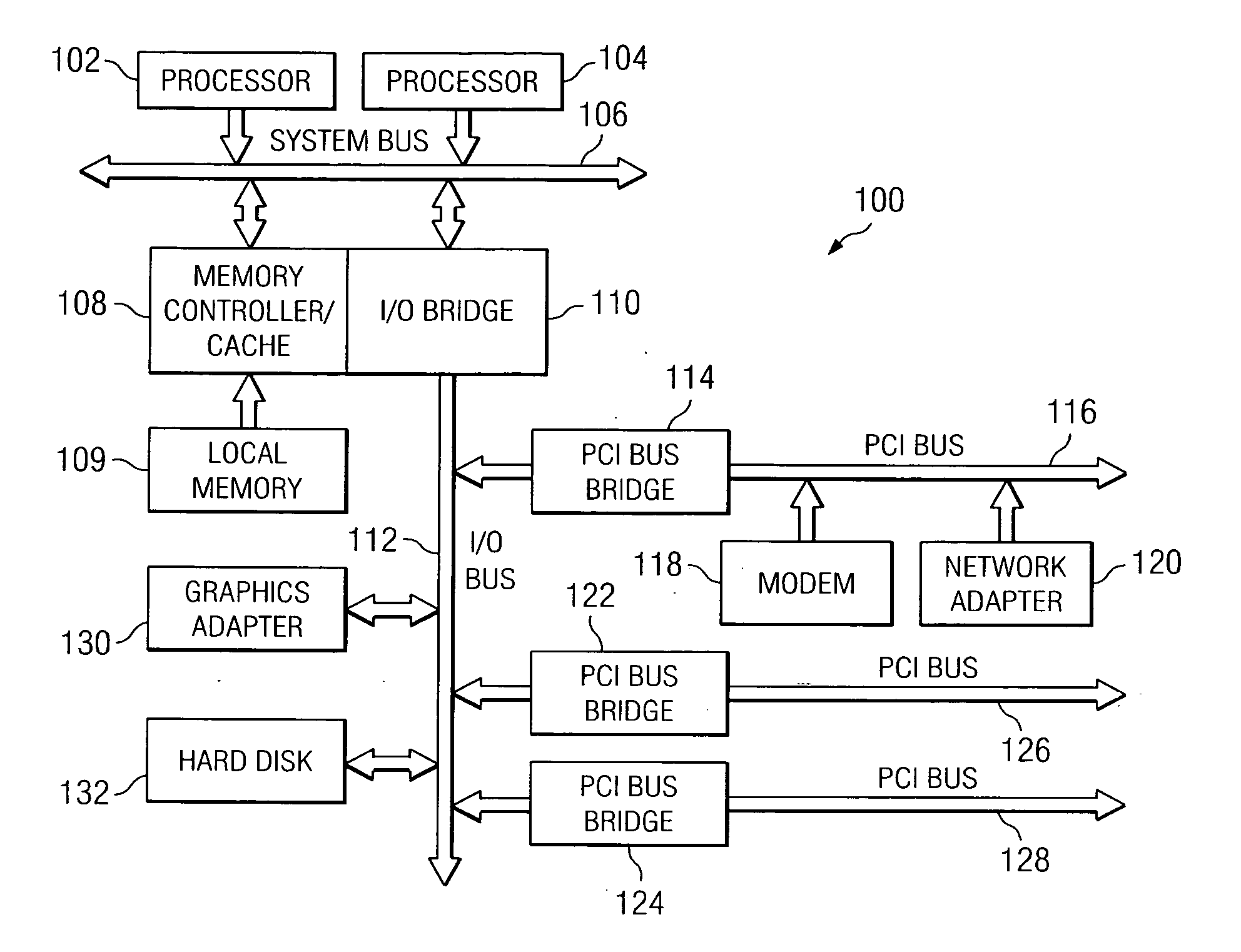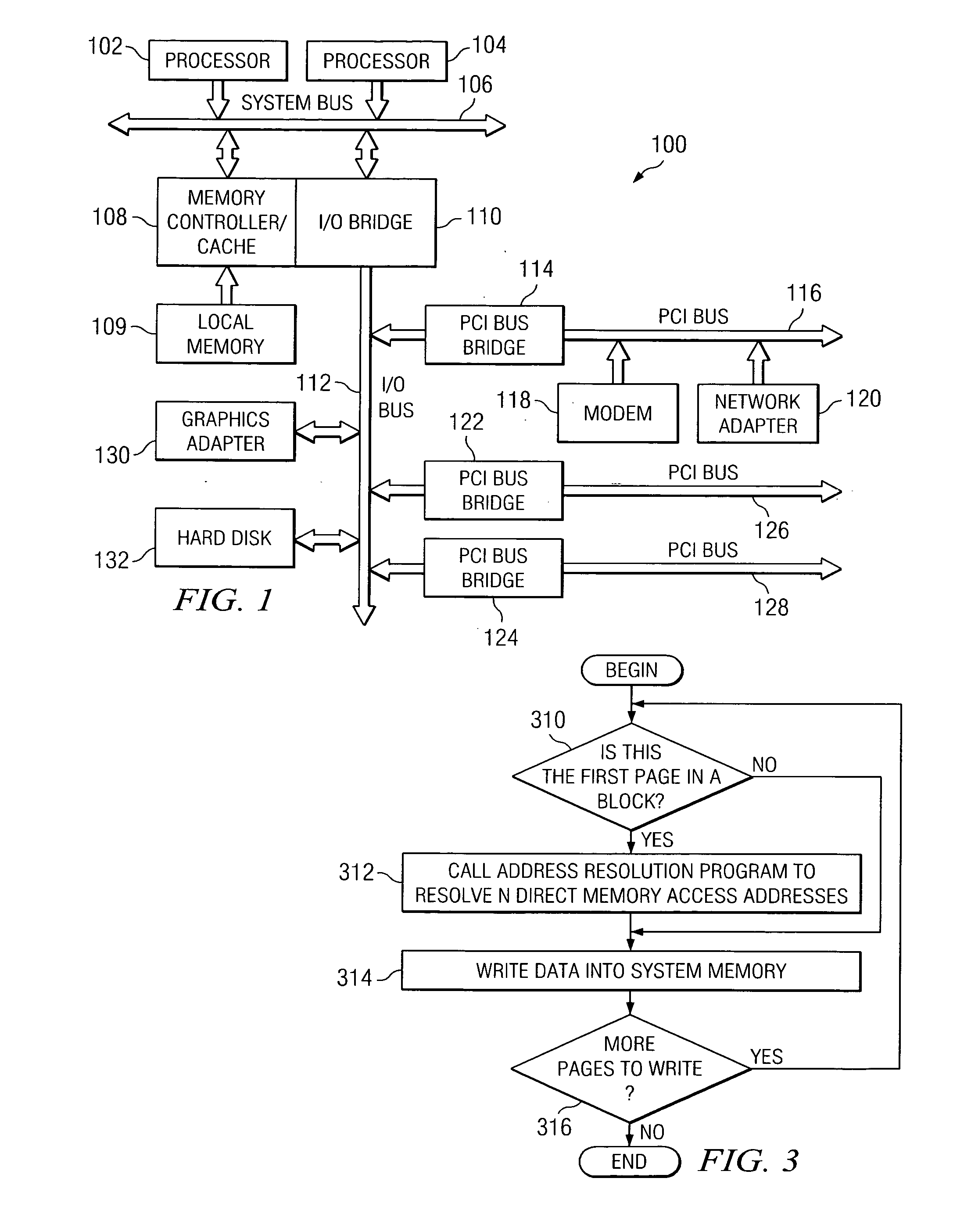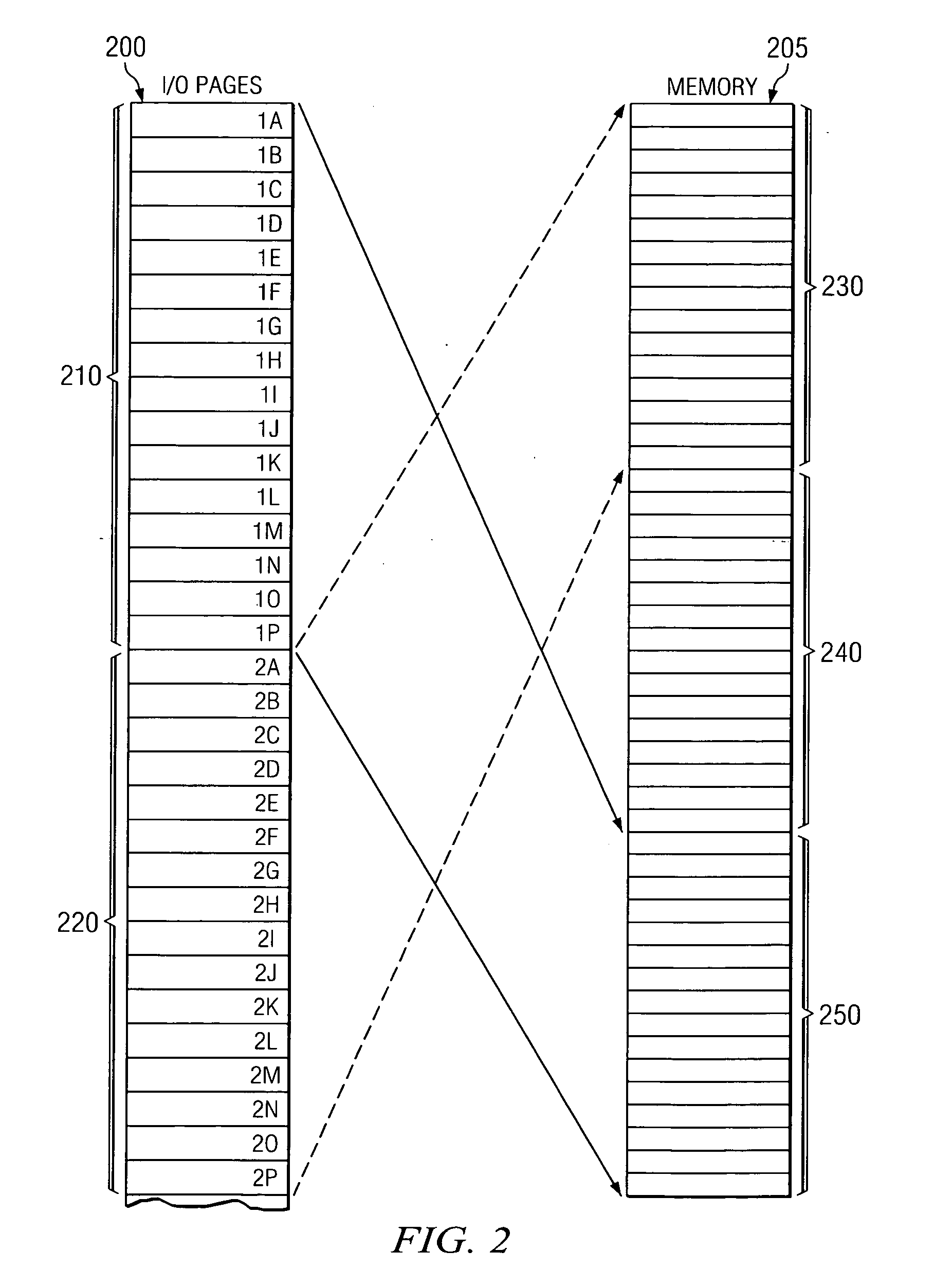Method for minimizing the translation overhead for large I/O transfers
a technology for large i/o transfers, applied in the field of minimizing the translation overhead for large i/o transfers, can solve problems such as affecting i/o throughput, and achieve the effects of reducing the overall wait time for accessing the address-mapping table, reducing the additional time, and increasing the i/o response tim
- Summary
- Abstract
- Description
- Claims
- Application Information
AI Technical Summary
Benefits of technology
Problems solved by technology
Method used
Image
Examples
Embodiment Construction
[0013] Referring now to FIG. 1, a block diagram of a data processing system is depicted in accordance with a preferred embodiment of the present invention. Data processing system 100 may be a symmetric multiprocessor (SMP) system including a plurality of processors 102 and 104 connected to system bus 106. Alternatively, a single processor system may be employed. Also connected to system bus 106 is memory controller / cache 108, which provides an interface to local memory 109. I / O bus bridge 110 is connected to system bus 106 and provides an interface to I / O bus 112. Memory controller / cache 108 and I / O bus bridge 110 may be integrated as depicted.
[0014] Peripheral component interconnect (PCI) bus bridge 114 connected to I / O bus 112 provides an interface to PCI local bus 116. A number of modems may be connected to PCI local bus 116. Typical PCI bus implementations will support four PCI expansion slots or add-in connectors.
[0015] Additional PCI bus bridges 122 and 124 provide interface...
PUM
 Login to View More
Login to View More Abstract
Description
Claims
Application Information
 Login to View More
Login to View More - R&D
- Intellectual Property
- Life Sciences
- Materials
- Tech Scout
- Unparalleled Data Quality
- Higher Quality Content
- 60% Fewer Hallucinations
Browse by: Latest US Patents, China's latest patents, Technical Efficacy Thesaurus, Application Domain, Technology Topic, Popular Technical Reports.
© 2025 PatSnap. All rights reserved.Legal|Privacy policy|Modern Slavery Act Transparency Statement|Sitemap|About US| Contact US: help@patsnap.com



